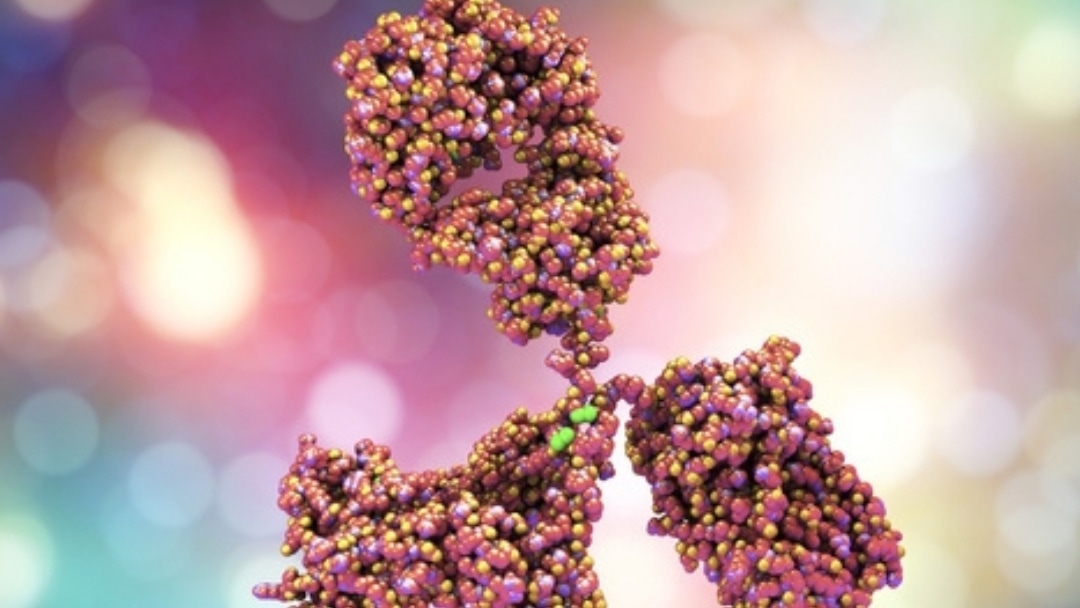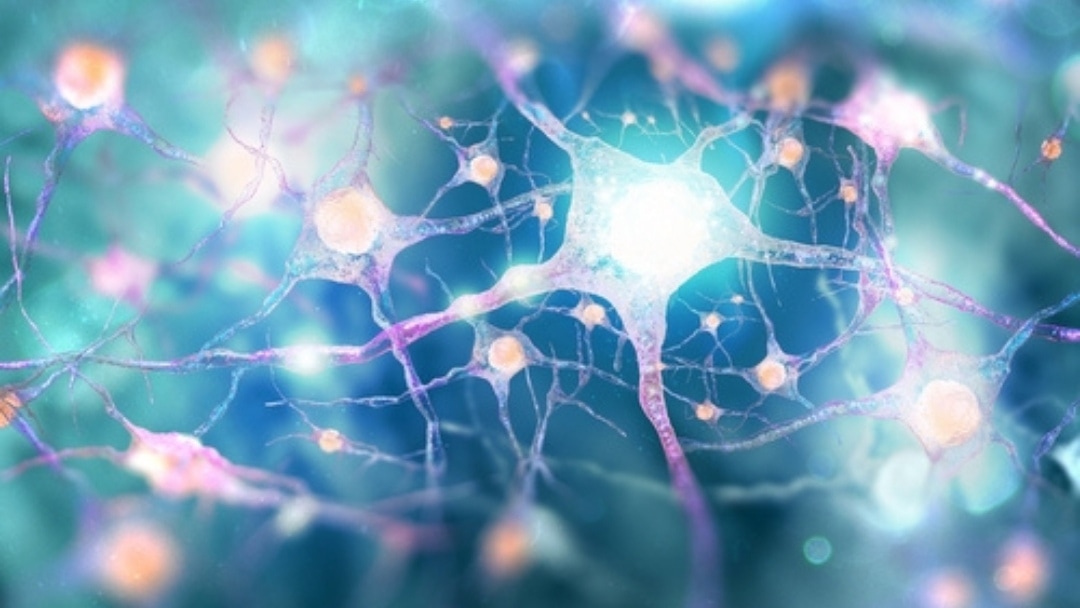Why Implement an Elimination Diet?
An elimination diet is one of the cornerstones of improving your child’s health, mood and behavior. Children with chronic health conditions typically have undetected food sensitivities and intolerances, known as IgA and IgG reactions. These reactions can take hours or days before symptoms manifest, in contrast to an IgE reaction, in which anaphylaxis is almost immediate after consumption of a problematic kind of food such as peanuts.
Sometimes, food can negatively impact the immune and gastrointestinal systems. There may be a domino effect going on with food intolerances and sensitivities. Disturbances in the gastrointestinal tract can cause imbalances in the hormonal, metabolic and immune functioning of your child.
Implementing an elimination diet can help you determine if certain foods are causing unwanted symptoms in your child’s health, mood or behavior.
If your child’s diet eliminates inflammatory foods, your child’s brain has a chance to calm down, the gastrointestinal system has an opportunity to heal and be supported, and the immune system has a break from being too reactive. In a nutshell, an elimination diet is a great way to determine inflammatory triggers in your child’s diet.
Blood tests for IgA and IgG food reactions are notoriously fickle, and the elimination diet is seen as the “gold standard” for determining if your child has a food sensitivity or not.
What Are Symptoms of Food Intolerances and Sensitivities?
Your child may be experiencing any of the following symptoms as a response to problematic foods:
- Focus and attention problems
- Sensory processing issues
- Constipation
- Diarrhea
- Mood swings
- Unwanted behaviors
- Temper tantrums
- Skin rashes
- Digestive system disturbances
- Low energy levels
- Cognitive issues
- Sleep difficulties
- Limited coping abilities
- Poor handwriting
- Swelling
- Red ears
- Ear infections
- Sore throat
- Runny nose
- Stuffy nose
- Allergies
- Headaches
- Brain fog
- Anxiety
- Cravings
- Addictions
Gastrointestinal symptoms are usually the first to surface with symptoms such as:
Eating problematic foods can wreak havoc on the digestive system by:
- Increasing bad gut bacteria
- Promoting pathogenic infection
- Increasing inflammation
- Reducing enzymes
- Lowering levels of good bacteria
- Lowering cellular immunity
- Speeding up or slowing down motility
- Contributing to poor nutrient absorption
Eating foods your child may be sensitive to can result in symptoms of chronic inflammation which may not be so apparent. The elimination diet offers a solution to identify what are the inflammatory culprits in your child’s diet. It’s simple, easy to do and can be the “gateway” solution to creating a healthier lifestyle.
Conditions Associated with Food Sensitivities and Intolerances
Because inflammation is a hallmark of a chronic health condition, food sensitivities and intolerances are commonly seen in children with:
Thus, implementing an elimination diet is a practical way to reduce symptoms. It must be noted, however, that while eliminating problematic foods can reduce symptoms and inflammation, more work must be done to uncover root causes of these disorders such as:
- Gut dysbiosis
- Immune dysregulation, including persistent pathogenic infection
Where to Begin?
Eliminate these inflammatory foods for seven to 10 days to give your child’s body a chance to detox and decrease inflammation:
- Gluten (found in wheat, barley, rye and non-gluten-free oats)
- Casein (found in all dairy products)
- Soy
- Corn
- Eggs
- Nuts and seeds
- Peanuts
- Fish
- Shellfish
For truer results of the elimination diet, you may want to consider simultaneously removing the following foods, as their inclusion can sometimes mask results:
- Sugar
- Red meat
- Hydrogenated trans fatty acids (bad fats such as margarine)
- Vinegar
- Spices and condiments that include vinegar and/or sugar
- Sweeteners
- Sugary beverages such as sodas and juices
- Synthetic dyes, additives, chemical preservatives, food coloring
- Nightshade vegetables: potatoes, tomatoes, eggplant and peppers
- Citrus fruits
- Any food your child craves and eats frequently such as chocolate
Reintroduce these foods back into the diet very slowly and one at a time every fourth day (or longer) and make sure your child drinks plenty of water.
The reintroduction (“challenge”) period may be lengthy depending on the symptoms that prevail. Observe your child carefully and identify reactions and changes that have returned during the reintroduction period. Be sure to keep a journal with your child’s symptoms for each food so you can see the overall effect of the elimination diet. You’re looking for unusual physical, mental, emotional academic or behavioral symptoms such as the ones listed at the top of this page. Remember that symptoms can take hours or even days (usually three days at the longest) to appear, which is why journaling is so important.
Elimination Diet Tips
The elimination diet is not expensive, but it is profoundly important. Here are some tips for successfully implementing it:
- Because this diet will take at least a month to implement, plan to implement it when there are no events or activities such as birthday parties or holidays at which your child could eat an eliminated food. If such an infraction occurs, you must start at the beginning to be absolutely sure of results.
- Clean out your kitchen of unwanted culprit foods that may be tempting your child.
- Shop and prepare your kitchen by having good, healthy foods on hand.
- Try out some recipes first before you implement the diet to be sure your child will like them.
- Get the support of family members before starting. Sometimes, family members can be notorious for giving children “illegal” foods because “one little bite won’t hurt.”
- Work with a health coach and/or nutritionist for ideas on recipes and implementation ideas.
- Scour the internet for recipes that are allergen-free.
- If eating out, consider choosing “build your own” restaurants that allow you to pick and choose ingredients. That said, it’s far easier to control the ingredients if you prepare meals yourself.
- If vacationing, consider staying a rental with a kitchen so that you can go to a local grocery for fresh ingredients and prepare meals at the rental.
- Be prepared: Always have “legal” snacks with you when out and about to avoid the temptation of eating “illegal” foods.
- Make dietary changes:
- Eat whole foods
- Buy organic foods
- Remove all GMO foods
- Remove all fast and processed foods
- Include plenty of good quality fats, such as:
- Coconut oil
- Olive oil
- Avocados
- Wild salmon
- Organic chicken
- Organic turkey
- Grass-fed ghee
- Include essential fatty acids from:
- Cod liver oil
- Hemp seeds
- Flax seeds
- Evening primrose oil
- Borage oil
- Walnut oil
- Krill oil
- Remove vegetable oils such as:
- Canola
- Corn
- Soy
- Safflower
- Sunflower
- Also consider:
- Maintaining fasting blood sugar at an optimal level of 70-85.
- Eliminating free glutamates.
- Testing for atypical sensitivities and intolerances (see below).
- Healing the gut
- Rotating foods
What’s the Research?
Researchers have discovered that nutrition plays a very important role in neurodevelopment. They recommend eliminating food additives, gluten and casein and other allergenic foods causing food sensitivities and intolerances and other adverse effects to the child.
Researchers have also determined that the main mechanism is the microbiome/gut-brain axis, which possibly involves complex interactions between multiple systems such as the metabolic, immune, endocrine and neural system.
Research indicates that an elimination diet is an effective treatment for not only food sensitivities and food intolerances but also for relief from symptoms of Attention Deficit Hyperactivity Disorder (ADHD) and Autism Spectrum Disorder. Please see the bottom of this page for more scholarly research articles about elimination diets.
Variations on the Elimination Diet for Long-Term Use
If you’ve discovered that your child has an intolerance or sensitivity to certain foods, you’ll want to explore special diets that eliminate those foods. As always, all diets need to be individualized to meet the needs of your child.
In all of these diets, there is a lot of cooking of whole foods from scratch due to the addition of more fresh fruits and vegetables and the deletion of most processed foods. In addition, the truer versions of these diets eliminate artificial colors, artificial flavors, chemical additives, trans fats, refined sugars, refined vegetables and sugar substitutes.
These days, it’s easy enough to find websites and books dedicated to any of the following diets:
- Gluten and Casein Free Diet (GFCF): This diet can help children with autism, ADHD, SPD as well as those with asthma and allergies improve their symptoms.
- Vegan: All animal products including eggs, milk and honey are prohibited. Because there is less saturated fat in this diet, high blood pressure may improve. Protein intake is important for vegans because there are limited sources, so supplementing with vitamin B12 may be necessary. In addition, the high amount of carbohydrates relative to protein may cause insulin resistance and weight gain in some, although not everyone experiences this issue.
- Vegetarian and Pescatarian: Vegetarians do not eat meat; pescatarians eat fish, but not poultry or red meat. These diets can lower the risk for chronic diseases because of the high intake of fruit, vegetables and fiber and healthy fats from fish and a lowering intake of saturated fats from beef and chicken. However, as with a vegan diet, there is a need to focus on enough protein, zinc, iron, calcium and vitamin B12.
- Paleo: This diet avoids processed foods, sugar, legumes, grains (including corn), potatoes and dairy but does allow for the consumption of sweet potatoes and honey. The paleo diet promotes taking healthy fats, vitamins, and minerals and may have cardiovascular benefits. However, there may be a deficiency of calcium, vitamin D and fiber, so be sure to include lots of animal protein and fats for a good source of vitamin D and lots of cruciferous vegetables because they are rich in vitamin C and calcium. A low-sugar and low-fruit Paleo diet (see ketogenic diet below) is an excellent way to control high blood sugar.
- Autoimmune Paleo: This version of the paleo diet eliminates additional foods that the standard Paleo diet does not: eggs, seeds, nuts and nightshade vegetables (potatoes, tomatoes, peppers and eggplant). It emphasizes a higher consumption of antioxidant-rich foods and is an excellent way to control inflammation.
- Ketogenic Diet: This diet is similar to the paleo diet but does allow for the consumption of dairy and peanuts (a legume) while eliminating sweet potatoes and honey from the diet. The daily limit for “net carbs”, the remainder of the total amount of carbohydrates in grams minus the amount of fiber in grams, is between 20 grams and 50 grams, which means that most fruit needs to be eliminated. In general, higher amounts of fats versus carbohydrates are consumed. Because this diet forces the body to run on ketones rather than glucose, it is well documented to help those with seizures, high blood sugar and diabetes.
- Mediterranean: This diet includes plenty of olive oil, fish, vegetables, fruits, nuts and seeds, beans, whole grains and some dairy products. It has been shown to prevent diabetes, cardiovascular disease and cognitive decline.
- Raw Food: This diet avoids meat, dairy, processed foods and cooked foods while enjoying raw fruits, vegetables, nuts and seeds. Because foods are not cooked, there is a higher nutritional value in non-cooked foods, especially of vitamins C and B as well as of plant-based enzymes. However, cooking destroys harmful bacteria, so a child with a compromised immune system should avoid unpasteurized products and juices.
- The Whole 30: This diet removes grains, dairy, legumes and added sugars and sweeteners from the diet for 30 days. A challenge with these foods can help determine if these foods are triggering food intolerances and sensitivities.
- The Failsafe Diet: This diet eliminates additives, salicylates, amines and high levels of free glutamates. This diet is not suitable for those with food allergies but is well tolerated for those with food chemical sensitivities, autism, ADHD, Sensory Processing Disorder and learning disabilities.
- Specific Carbohydrate Diet: This diet was developed by Elaine Gottschall to stop the vicious cycle of malabsorption and microbe overgrowth by removing the source of energy to the microbes: sugars and certain carbohydrates. By doing so, inflammation decreases, the digestive system heals and the immune system can return to normal.
- GAPS (Gut And Psychology Syndrome) Diet: The GAPS diet was developed by Natasha Campbell-McBride MD, who used it to recover her son from autism. It is similar to the paleo diet and the Specific Carbohydrate Diet but allows for homemade, fermented dairy as well as eggs and some legumes. All fruits and vegetables must be well cooked. This diet emphasizes bone broth and fermented foods.
- Body Ecology Diet: This diet was developed by Donna Gates to heal the gastrointestinal system. While it does allow for the consumption of gluten-free grains, they must not be combined with protein in the same meal. In addition, very few fruits are allowed. By emphasizing an acid/alkaline balance, food combining and fermented foods, expansion/contraction and the “80/20 rule”, the gut is allowed to heal.
- Feingold Diet: This diet, developed by Ben Feingold MD back in the 1970’s, is the original diet that showed that removal of certain foods and ingredients can improve a child’s allergies, mood, behavior and attention. It calls for the removal of artificial colors, artificial flavors and preservatives as well as foods containing high amounts of phenols and salicylates, which includes natural foods.
- Low-Glutamate Diet: An excess of free glutamate, found in processed foods as well as some natural foods), can cause brain fog, seizures, problems with attention and focus and symptoms of autism, ADHD and Sensory Processing Disorder.
- Lutein-Free Diet (Sarah’s Diet): This diet theorizes that children with autism crave opioid-producing foods (gluten and casein-containing foods) as a way to reduce the stress of the immune reaction to lutein, which are found in colored fruits and vegetables.
- Low-Oxalate Diet (LOD): Oxalates are molecules found in food that join with calcium to create crystallized “stones” in the body that then contribute to inflammation. Unbound oxalates can interfere with sulfate and iron absorption and can impair brain function. Eliminating foods that are high in oxalates such as Swiss chard and spinach can help.
- Low-Histamine Diet: This diet is often a secondary, refining diet that is explored if symptoms continue to persist. Having your child follow it can help to reduce inflammation and lowering exaggerated immune-system responses. Because of histamine’s ability to exacerbate allergic and immune responses, a low-histamine diet can be helpful in reducing symptoms of numerous autoimmune, gastrointestinal and neurological conditions.
Learn more about healing diets and foods here.
Laboratory Testing
While laboratory testing for food reactions is available, it’s important to remember that results can vary widely from test to test, depending on the status of a person’s immune system and inflammation levels. A food that was deemed as “safe” may become inflammatory if it is relied upon too much, which is why it’s important to rotate foods and serve a wide variety of food. For these reasons, an elimination diet is seen as “the gold standard”.
Below are laboratories that offer tests to help you determine a course of action for your child:
- Viome combines information from a microbiome test with a metabolic test to see how the body and the flora in the digestive system interact with specific foods.
- LRA Lymphocyte Response Assay by ELISA/ACT Biotechnologies is a delayed hypersensitivity test that looks directly at lymphocytes to detect delayed food and chemical hypersensitivities up to 504 items.
- Food and Chemical Sensitivity Testing by ALCAT tests over 450 substances to determine which food and other substances trigger chronic inflammation.
- Allergy and Immunology Overview by ALLETESS Medical Laboratory tests for environmental allergens, food allergies, yeast and mold allergies and gut immunity.
- IgG Food Allergy Test and Candida by Great Plains Laboratory tests for 93 foods with Candida, a yeast that increases and produces toxins that create holes in the intestinal lining leading to a leaky gut. Once in the blood, it can cause an inflammatory immune system response.
- Bloodprint Test (IgG) Airborne and Food Allergy Test (IgE) by Immunolabs is a delayed food reactivity test also comes with a nutritional program. The Airborne and Food Allergy Test is the immediate reactivity test for IgE.
- The Bloodspot IgG4 Food Antibody Profile by Genova Diagnostics measures levels of IgG4 antibodies specific to 30 commonly offending foods clearly identifying foods causing patient reactions.
- Multiple Test Arrays and Food Reactivity Screens by Cyrex Labs to screen for a large variety of different food and chemical sensitivities.
- A – 95 Food Panel by Meridian Valley Laboratory is a basic food allergy test panel which is a combined IgG4 and IgE by ELISA Method consisting of 95 commonly eaten foods and includes a free Candida screening.
Still Looking for Answers?
Visit the Epidemic Answers Practitioner Directory to find a practitioner near you.
Join us inside our online membership community for parents, Healing Together, where you’ll find even more healing resources, expert guidance, and a community to support you every step of your child’s healing journey.
Sources & References
Adams, J.B., et al. Comprehensive Nutritional and Dietary Intervention for Autism Spectrum Disorder—A Randomized, Controlled 12-Month Trial. Nutrients. 2018, 10, 369.
Aucoin, M., et al. Major Depressive Disorder and Food Hypersensitivity: A Case Report. Neuropsychobiology. 2019 Oct 10:1-7.
Karakula-Juchnowicz, H., et al. The Food-Specific Serum IgG Reactivity in Major Depressive Disorder Patients, Irritable Bowel Syndrome Patients and Healthy Controls. Nutrients. 2018 Apr 28;10(5). pii: E548.
Karakula-Juchnowicz, H., et al. The role of IgG hypersensitivity in the pathogenesis and therapy of depressive disorders. Nutr Neurosci. 2017 Feb;20(2):110-118.
Martin, V.T., et al. Diet and Headache: Part 1. Headache. 2016 Oct;56(9):1543-1552.
Pelsser, L.M., et al. Effects of a restricted elimination diet on the behaviour of children with attention-deficit hyperactivity disorder (INCA study): a randomised controlled trial. Lancet. 2011 Feb 5;377(9764):494-503.
Philpott, H., et al. Allergy tests do not predict food triggers in adult patients with eosinophilic oesophagitis. A comprehensive prospective study using five modalities. Aliment Pharmacol Ther. 2016 Aug;44(3):223-33.
Shakoor, Z., et al. Prevalence of IgG-mediated food intolerance among patients with allergic symptoms. Ann Saudi Med. 2016 Nov-Dec;36(6):386-390.
Sloper, K.S., et al. Children with atopic eczema. II: Immunological findings associated with dietary manipulations. Q J Med. 1991 Aug;80(292):695-705.
Stockton, S., et al. The Impact of a Food Elimination Diet on Collegiate Athletes’ 300-meter Run Time and Concentration. Glob Adv Health Med. 2014 Nov;3(6):25-40.
Verena, L., et al. Elimination diets’ efficacy and mechanisms in attention deficit hyperactivity disorder and autism spectrum disorder. Eur Child Adolesc Psychiatry. 2017; 26(9): 1067–1079.
Virdee, K., et al. Food-specific IgG Antibody-guided Elimination Diets Followed by Resolution of Asthma Symptoms and Reduction in Pharmacological Interventions in Two Patients: A Case Report. Glob Adv Health Med. 2015 Jan;4(1):62-6.
Xie, Y., et al. Effects of Diet Based on IgG Elimination Combined with Probiotics on Migraine Plus Irritable Bowel Syndrome. Pain Res Manag. 2019 Aug 21;2019:7890461.
Resources
Books
Compart, Pamela and Laake, Dana. The Kid-Friendly ADHD and Autism Cookbook: The Ultimate Guide to the Gluten-Free, Casein Free Diet.
Dorfman, Kelly. Cure Your Child with Food: The Hidden Connection Between Nutrition and Childhood Ailments.
Matthews, Julie. Nourishing Hope for Autism: Nutrition and Diet Guide for Healing Our Children.
Websites
The Bulletproof Diet Roadmap Free Download
Royal Prince Albert Hospital Allergy Unit Elimination Diet Handbook with food and shopping guide
University of Wisconsin Integrative Health: The Elimination Diet




